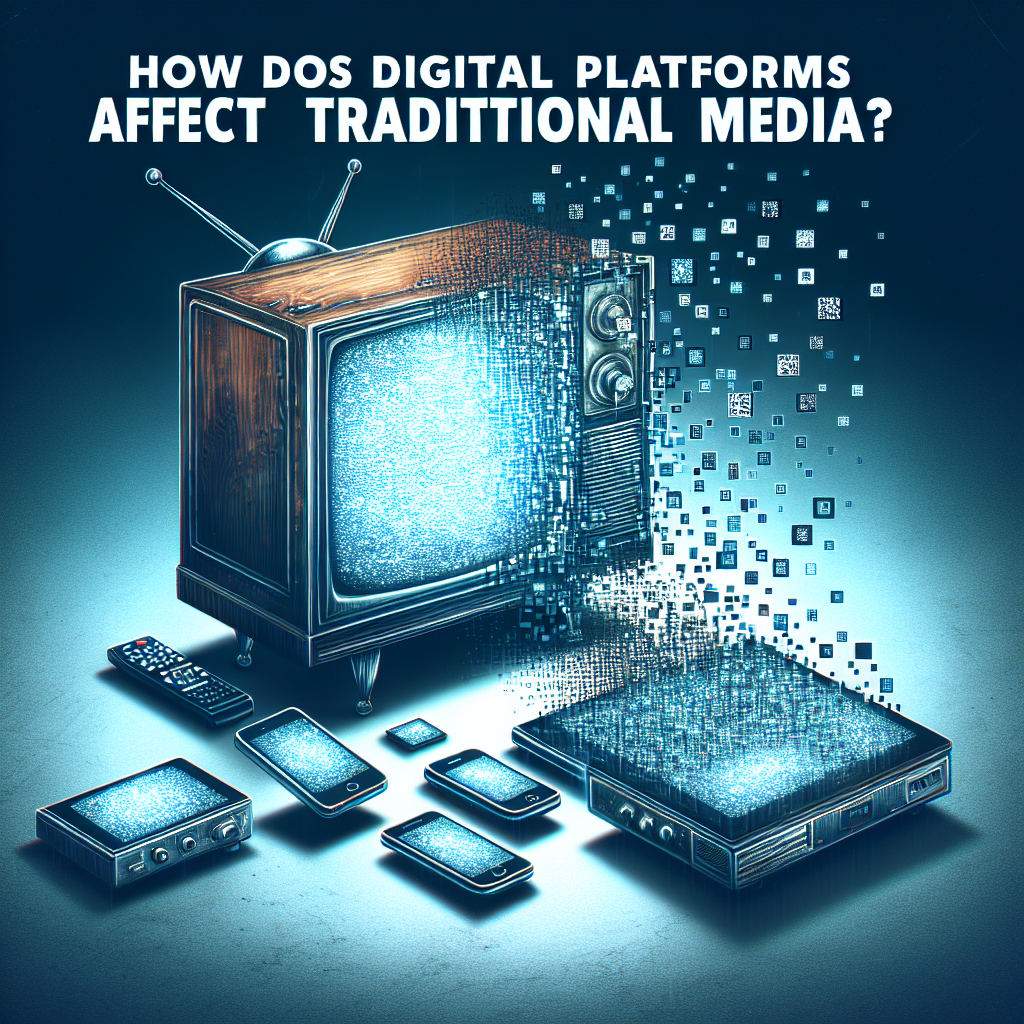In the past few decades, the rise of digital platforms has revolutionized the way people consume media. From social media platforms like Facebook and Twitter to streaming services like Netflix and Spotify, digital platforms have changed the way we access news, music, television shows, and movies. This shift has had a significant impact on traditional media outlets, such as newspapers, television networks, and radio stations. In this article, we will explore how digital platforms have affected traditional media and what these changes mean for the future of the industry.
One of the most significant ways that digital platforms have impacted traditional media is by changing the way people access news and information. In the past, people relied on newspapers, television news broadcasts, and radio shows to stay informed about current events. However, with the rise of social media and news aggregators, many people now get their news from online sources. This has led to a decline in traditional media outlets’ readership and viewership, as more and more people turn to digital platforms for their news.
Another way that digital platforms have affected traditional media is by changing the way content is produced and distributed. In the past, traditional media outlets had control over what content was produced and how it was distributed. However, with the rise of digital platforms, content creators have more opportunities to reach audiences directly through social media, websites, and streaming services. This has led to an increase in user-generated content and a decrease in the importance of traditional media outlets as gatekeepers of information.
Furthermore, digital platforms have also changed the way traditional media outlets generate revenue. In the past, newspapers and television networks relied on advertising revenue to fund their operations. However, with the rise of digital platforms, many advertisers have shifted their budgets to online advertising, which has led to a decline in traditional media outlets’ ad revenue. This has forced many traditional media outlets to adapt their business models to survive in the digital age.
In addition to these changes, digital platforms have also impacted the way traditional media outlets interact with their audiences. In the past, traditional media outlets had limited opportunities to engage with their readers, viewers, and listeners. However, with the rise of social media and other digital platforms, traditional media outlets have more ways to interact with their audiences and receive feedback. This has led to a more interactive relationship between traditional media outlets and their audiences, with audiences playing a larger role in shaping the content that is produced.
Overall, the rise of digital platforms has had a profound impact on traditional media outlets, changing the way news and information are consumed, produced, distributed, and funded. While these changes have presented challenges for traditional media outlets, they have also created new opportunities for innovation and growth. As the media landscape continues to evolve, it will be important for traditional media outlets to adapt to the digital age in order to remain relevant and competitive.
FAQs:
Q: How have digital platforms changed the way people access news?
A: Digital platforms have made it easier for people to access news from online sources, leading to a decline in traditional media outlets’ readership and viewership.
Q: How have digital platforms impacted traditional media outlets’ revenue?
A: Digital platforms have shifted advertising revenue away from traditional media outlets, forcing them to adapt their business models to survive in the digital age.
Q: How have digital platforms changed the way traditional media outlets interact with their audiences?
A: Digital platforms have made it easier for traditional media outlets to engage with their audiences and receive feedback, leading to a more interactive relationship between media outlets and their audiences.
Q: What opportunities do digital platforms create for traditional media outlets?
A: Digital platforms create opportunities for traditional media outlets to reach new audiences, experiment with new forms of content, and innovate in ways that were not possible before the rise of digital platforms.
